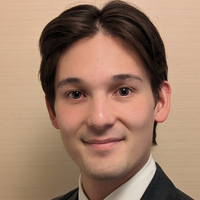Subject to change.

Subject to change.

Ethan N. Okoshi is is a graduate student at the Nagasaki University Graduate School of Biomedical Sciences. He recieved his bachelors degree from the University of Rochester with majors in Biology, Japanese, and Anthropology. Since graduation from undergrad, he moved to Nagasaki, Japan, and has been happily conducting research on AI applications in Pathology for the past three years.